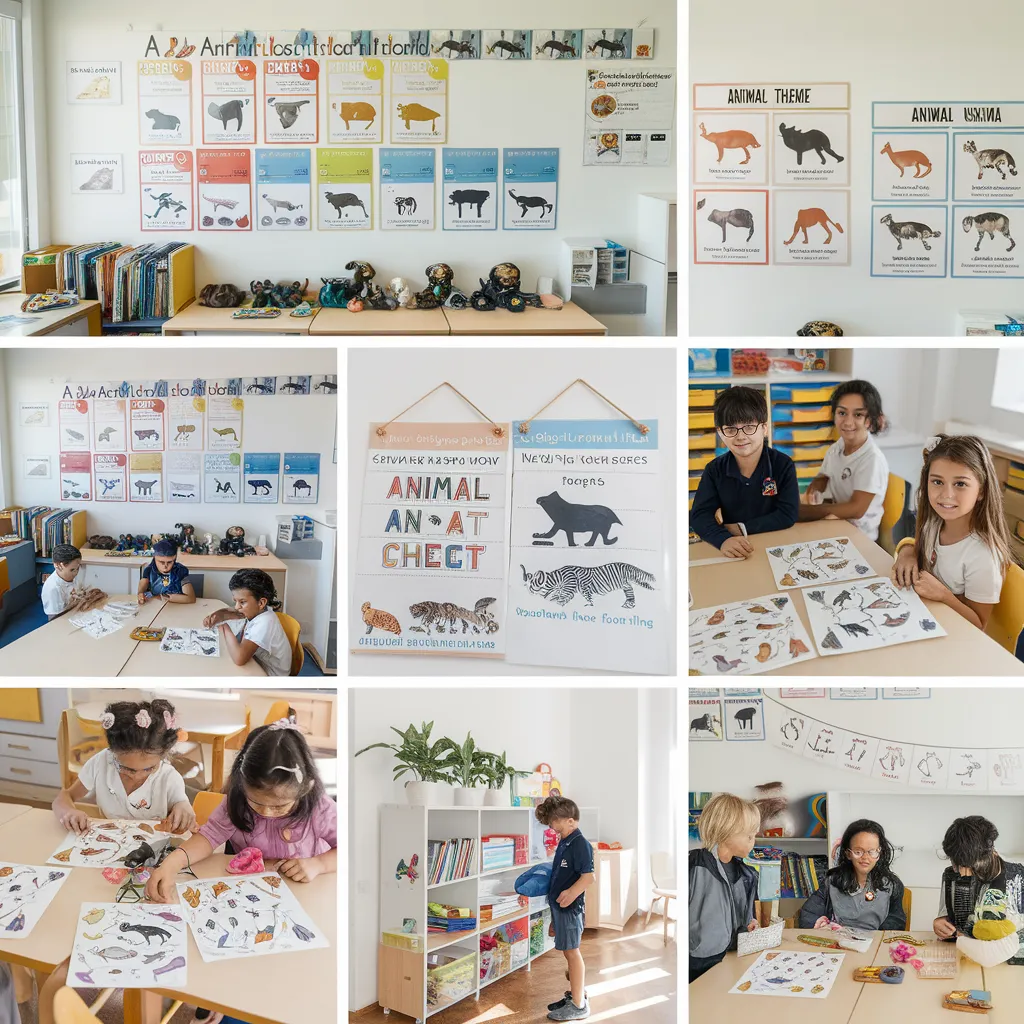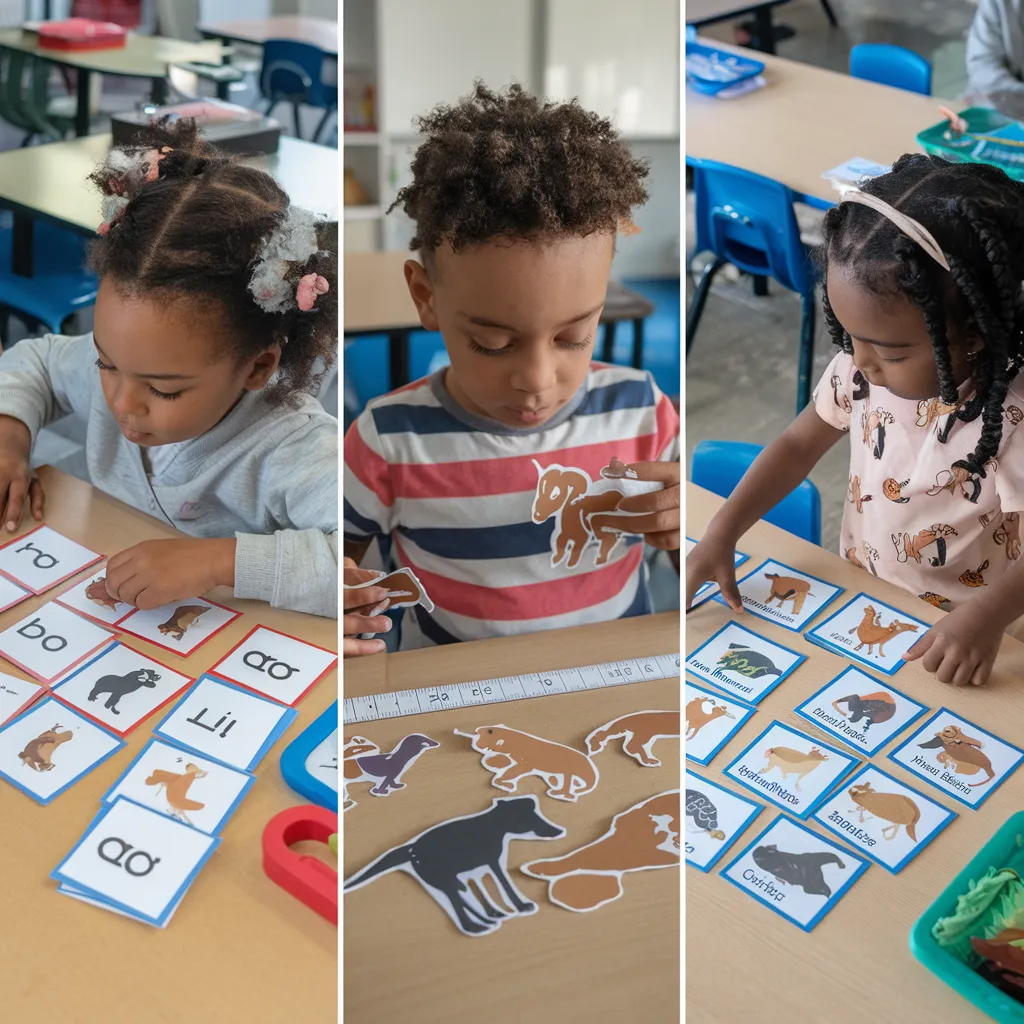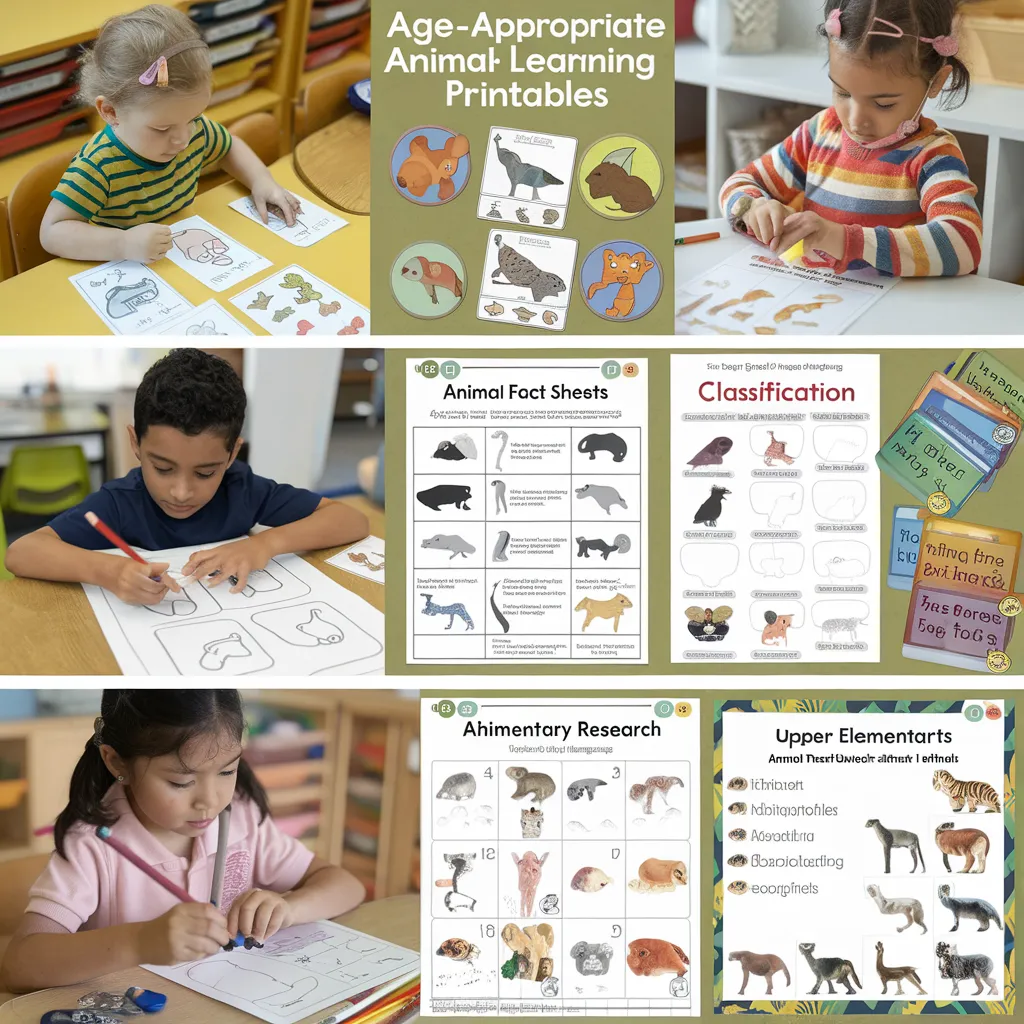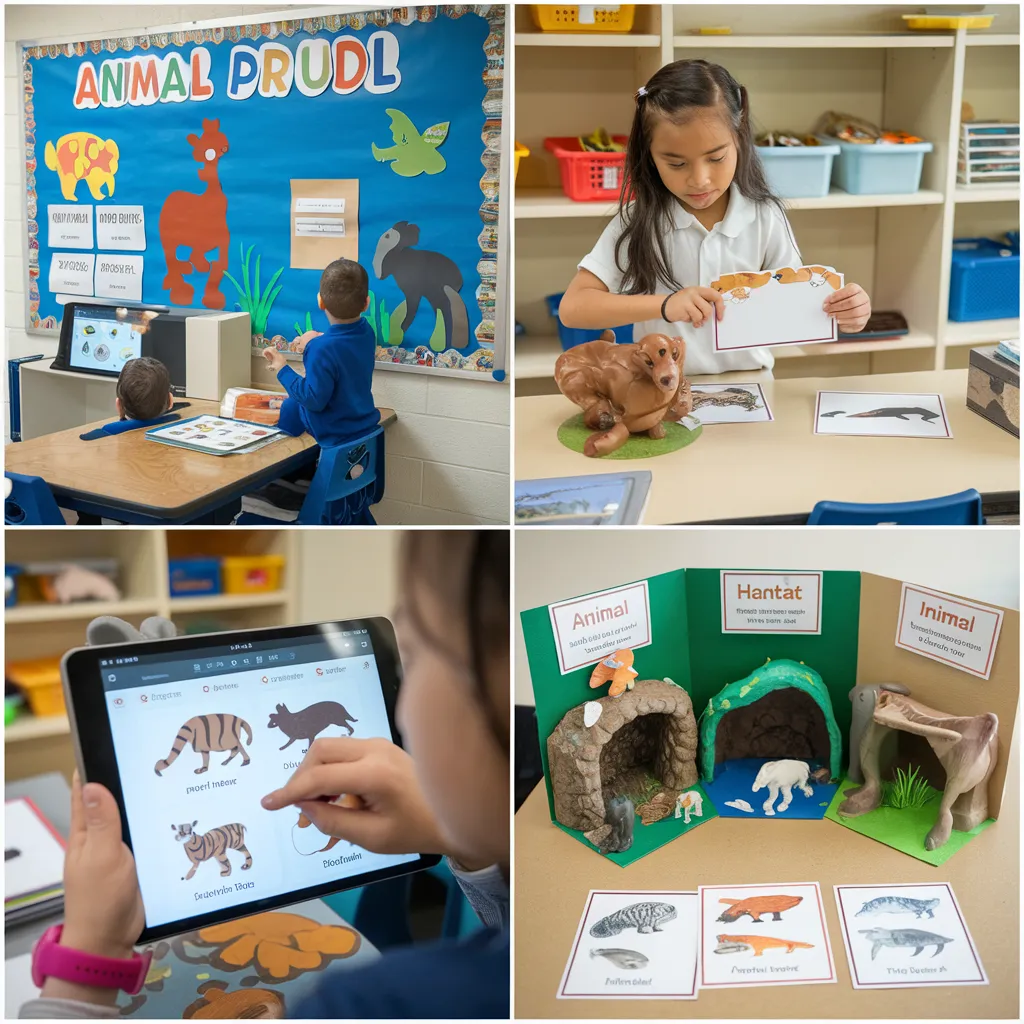Animal theme learning printables offer a powerful way to engage children across multiple subject areas while tapping into their natural fascination with the animal kingdom. These versatile educational resources transform ordinary lessons into exciting explorations of wildlife, habitats, and animal characteristics. Whether you’re a classroom teacher seeking to enhance your science curriculum, a homeschool parent creating thematic units, or simply looking for educational activities for rainy days, animal theme learning printables provide ready-to-use materials that capture children’s imagination while building essential skills. From alphabet activities featuring exotic creatures to math worksheets with farm animal counting, these animal-focused resources create meaningful learning connections that children eagerly engage with.

Educational Benefits of Animal Theme Learning Printables
Animal theme learning printables offer substantial advantages beyond their immediate appeal to children:

Cognitive Development Enhancement
- Classification skills: Sorting animals by characteristics, habitats, or diets
- Pattern recognition: Identifying similarities and differences among animal groups
- Vocabulary building: Learning specific animal terminology and characteristics
- Scientific thinking: Developing observation and comparison abilities
- Memory enhancement: Recalling animal facts and categories
Cross-Curricular Learning Opportunities
Animal theme learning printables naturally bridge multiple subject areas:
- Literacy Connections
- Alphabet associations with animals (A for alligator, B for bear)
- Reading comprehension through animal fact sheets
- Writing development with animal-inspired prompts
- Phonological awareness using animal names and sounds
- Mathematical Applications
- Counting activities with animal images
- Measurement comparisons of animal sizes
- Pattern creation with animal pictures
- Data collection and graphing of animal characteristics
- Problem-solving with animal-themed word problems
- Science Integration
- Classification of animals by biological categories
- Habitat studies through animal-environment connections
- Life cycle visualization and sequencing
- Food web and chain demonstrations
- Adaptation and evolution concepts
Types of Animal Theme Learning Printables by Age Group
Different developmental stages benefit from specific types of animal-focused materials:
Animal Theme Learning Printables for Preschoolers (Ages 2-4)
- Basic Matching Activities
- Animal-to-shadow matching cards
- Mother and baby animal pairs
- Animal and habitat connections
- Simple animal puzzle printables
- Sensory-Motor Development
- Animal-shaped tracing paths
- Dot-to-dot animals with limited numbers
- Animal coloring pages with large, simple outlines
- Cut-and-paste animal part activities
- Early Literacy Foundations
- Animal alphabet posters and cards
- Beginning sound matching with animal pictures
- Simple animal labeling activities
- Animal-themed name recognition templates
Animal Theme Learning Printables for Early Elementary (Ages 5-8)

- Reading Development Materials
- Animal fact reading comprehension sheets
- Animal-themed word searches and crosswords
- Habitat vocabulary building activities
- Animal research mini-book templates
- Mathematical Skill Builders
- Skip counting with animal tracks
- Animal measurement comparison charts
- Shape recognition with animal features
- Addition and subtraction with animal contexts
- Scientific Exploration Tools
- Animal classification sorting mats
- Habitat creation worksheets
- Life cycle sequencing activities
- Food chain arranging printables
- Animal adaptation investigation sheets
Animal Theme Learning Printables for Upper Elementary (Ages 9-12)
- Advanced Literacy Resources
- Animal research report templates
- Endangered species fact gathering forms
- Descriptive writing prompts with animal subjects
- Compare and contrast animal analysis sheets
- Complex Mathematical Applications
- Animal population graphing activities
- Scale calculation with animal dimensions
- Probability exercises with animal characteristics
- Fraction concepts using animal groupings
- Scientific Investigation Materials
- Animal adaptation design challenges
- Ecosystem interdependence mapping
- Animal behavior observation logs
- Evolutionary relationship diagrams
- Conservation issue analysis frameworks
Creating Custom Animal Theme Learning Printables
Designing your own animal-focused educational materials allows perfect customization for specific learning objectives:
Digital Tools for Animal Theme Learning Printables
- User-Friendly Design Platforms
- Canva’s educational templates with animal graphics
- Google Slides for interactive animal worksheets
- Microsoft Word with animal clipart collections
- Adobe Express for professionally styled materials
- PicMonkey for photo editing of animal images
- Animal-Specific Resource Libraries
- National Geographic photo collections
- Free animal clipart databases
- Scientific illustration archives
- Wildlife conservation organization resources
- Museum educational material repositories
Differentiation Strategies for Animal Theme Learning Printables

Creating inclusive materials ensures all learners benefit from animal-themed resources:
- Readiness-Based Modifications
- Multiple complexity levels of the same activity
- Varied text readability on animal information sheets
- Scaffolded response options (from drawing to detailed writing)
- Tiered challenge levels for animal research
- Open-ended vs. structured animal investigation formats
- Interest-Based Adaptations
- Focus on specific animal groups (marine, forest, desert)
- Connection to current animal-related events or media
- Integration of local wildlife versus exotic species
- Incorporation of students’ pet experiences
- Linkage to conservation efforts or animal welfare
Implementing Animal Theme Learning Printables Effectively
Maximize educational impact with these implementation strategies:
Creating Immersive Animal Learning Environments
- Thematic Learning Centers
- Wildlife research stations with printable field guides
- Animal classification sorting areas
- Habitat creation zones with printable background scenes
- Conservation action centers with fact sheets and checklists
- Interactive Bulletin Board Displays
- « Animal of the Week » spotlight with changeable printables
- Habitat maps with attachable animal cards
- Migration route trackers with printable animal markers
- Endangered species awareness boards with information printables
- Take-Home Connection Materials
- Family animal observation printables for local wildlife
- Home-school connection activity guides
- Animal care responsibility charts for pets
- Environmental stewardship checklists
Digital Integration of Animal Theme Learning Printables
- Virtual Adaptation Strategies
- Converting PDF printables to interactive digital worksheets
- Creating digital animal research journals with embedded printables
- Developing slideshows with printable animal fact sheets
- Building virtual field trips with printable observation guides
- Multimedia Enhancement Opportunities
- Pairing printables with animal webcams or videos
- Connecting worksheets to digital animal encyclopedias
- Using QR codes on printables linking to animal sounds
- Creating augmented reality experiences with printed materials
Conclusion
Animal theme learning printables provide versatile, engaging resources that transform educational experiences across multiple subject areas. By tapping into children’s natural curiosity about animals, these materials create meaningful learning contexts that promote skill development while nurturing appreciation for the natural world. Whether purchased from educational suppliers or custom-created for specific learning objectives, animal theme learning printables offer immediate access to high-quality, ready-to-use resources that save preparation time while maximizing student engagement. Begin by selecting printables that align with your current curriculum goals, gathering them into organized thematic collections, and observing how children respond to these animal-focused materials. As you expand your use of animal theme learning printables, you’ll discover endless opportunities to create cross-curricular connections that make learning both effective and joyful.
Frequently Asked Questions
How can I organize a large collection of animal theme learning printables?
Create a systematic organization method using both digital and physical systems. Digitally, establish a consistent file naming convention (e.g., « AnimalType_Subject_AgeRange ») and use folder structures that align with your curriculum organization. For physical storage, consider clear plastic folders or binders with divider tabs organized by animal type, curriculum area, or age range. Create a simple inventory spreadsheet listing each resource with tags for subject, age level, and specific skills addressed. Set a regular schedule for reviewing and culling outdated materials. Consider laminating frequently used printables or storing them in plastic sheet protectors to extend their usability across multiple years or student groups.
How do I align animal theme learning printables with curriculum standards?
Start by identifying the specific standards you need to address, then look for animal printables that naturally support those learning objectives. Create a simple cross-reference system noting which standards each printable addresses. When selecting or creating materials, focus on substantive content that develops required skills rather than merely decorative animal themes. Consider adapting high-quality general printables with animal contexts or examples. For comprehensive coverage, analyze your standard requirements first, identify potential gaps, then seek or create specific animal-themed materials to address those areas. Remember that effective alignment focuses on the learning objective, using the animal theme as an engaging context rather than the primary focus.
How can I use animal theme learning printables for assessment purposes?
Animal theme learning printables offer numerous assessment opportunities beyond traditional testing. Use animal sorting activities to assess classification understanding, habitat matching to evaluate ecosystem knowledge, or animal adaptation worksheets to measure comprehension of evolutionary concepts. Create rubrics specifically for animal-themed projects that clearly define success criteria. Consider developing pre/post assessment tools using similar animal printables to measure growth. Digital portfolios can showcase progression through animal-themed work samples. The most effective assessments using these materials combine objective measurement of specific skills with opportunities for students to demonstrate creative application of animal knowledge.
How do I prevent animal theme learning printables from perpetuating misconceptions about animals?
Review all materials for scientific accuracy and avoid printables that anthropomorphize animals unrealistically or present outdated information. Seek resources from reputable sources like wildlife organizations, museums, or educational publishers with scientific review processes. When using fictional animal characters or stylized illustrations, explicitly discuss with students the differences between represented and actual animals. Balance cute or popular animals with less familiar species to avoid reinforcing only mainstream animal interests. Include information about actual animal behaviors, needs, and habitats alongside any cartoon representations. When possible, pair printable activities with photographs of real animals and factual information to maintain educational integrity.
What if students have fears or negative associations with certain animals featured in the printables?
Approach animal fears sensitively by first acknowledging that all feelings are valid while gradually introducing accurate information about animals in non-threatening ways. Offer alternative animal options for activities when possible, allowing students to substitute animals they feel comfortable with. Use distance-creating strategies like starting with cartoon versions before transitioning to realistic images, or focusing on scientific aspects rather than potentially frightening characteristics. Create positive associations through connection to conservation, highlighting the animal’s ecological importance, or focusing on interesting adaptations. Partner with school counselors for students with severe animal phobias, using printables as controlled exposure tools when appropriate. Remember that building knowledge often reduces fear, but forcing engagement can increase anxiety.
